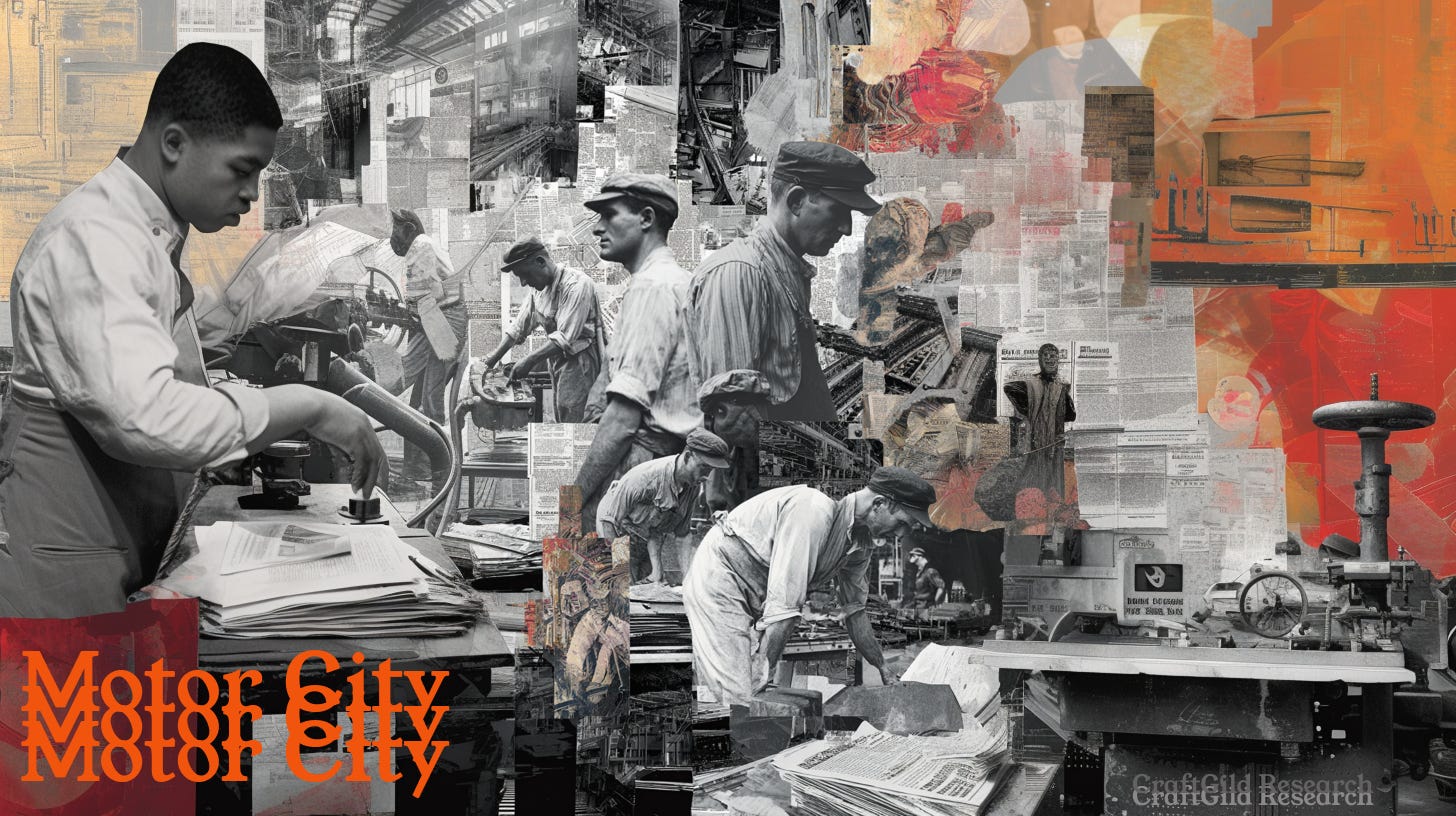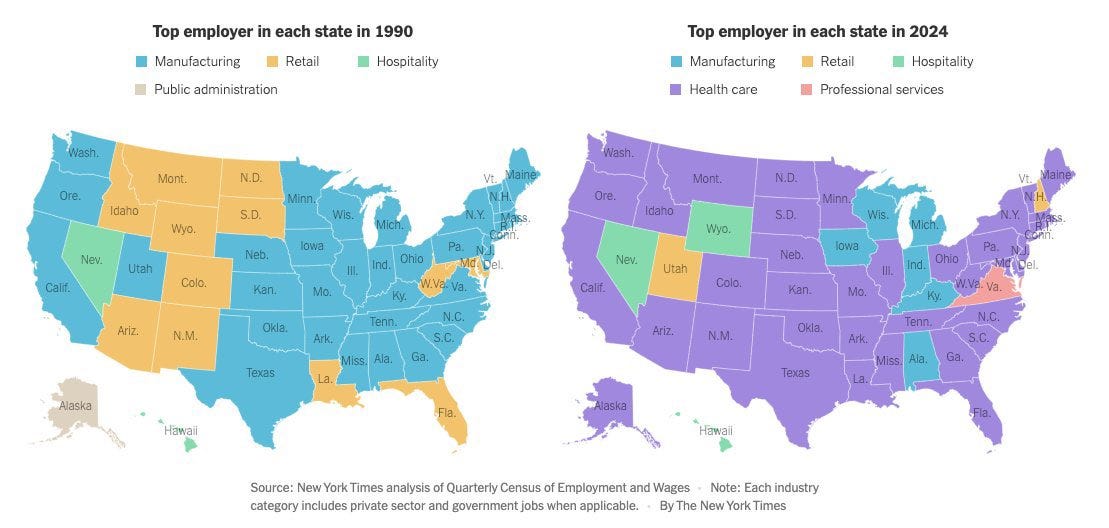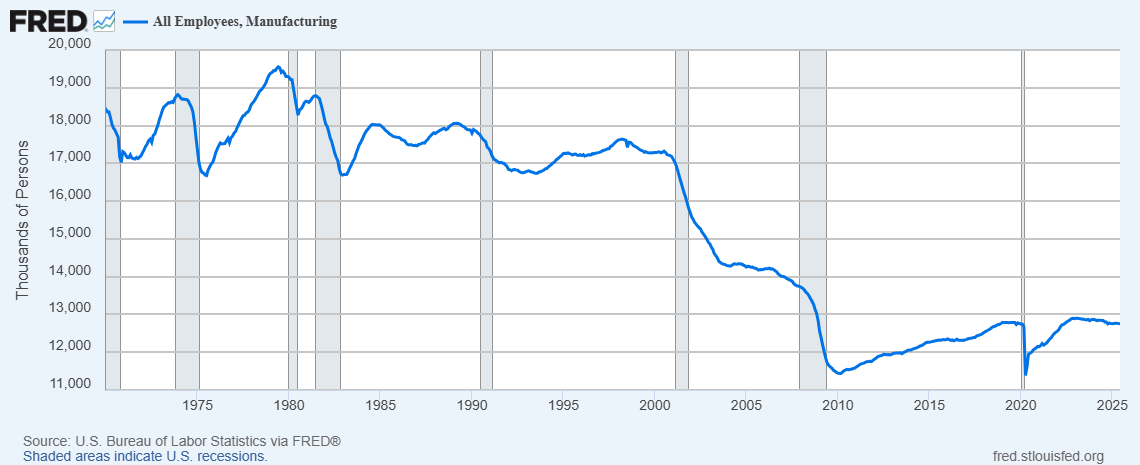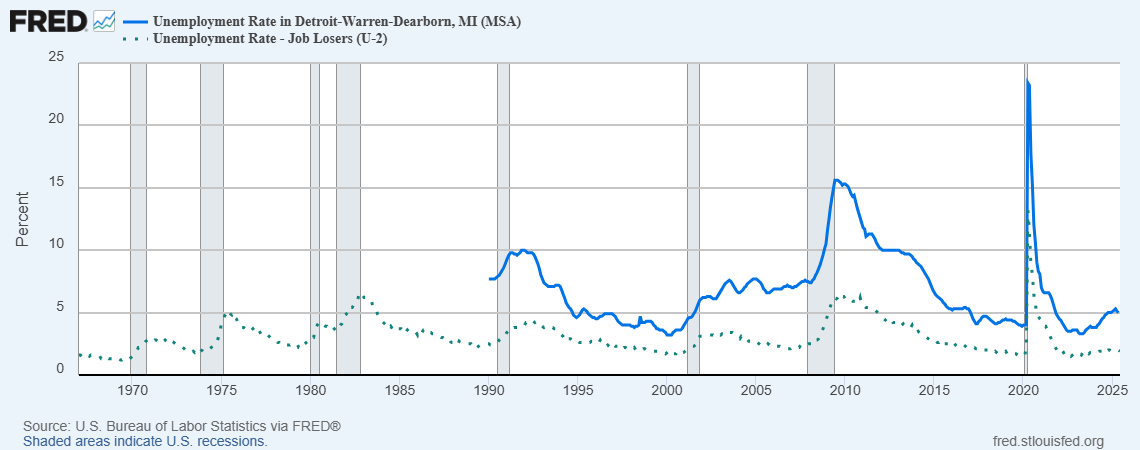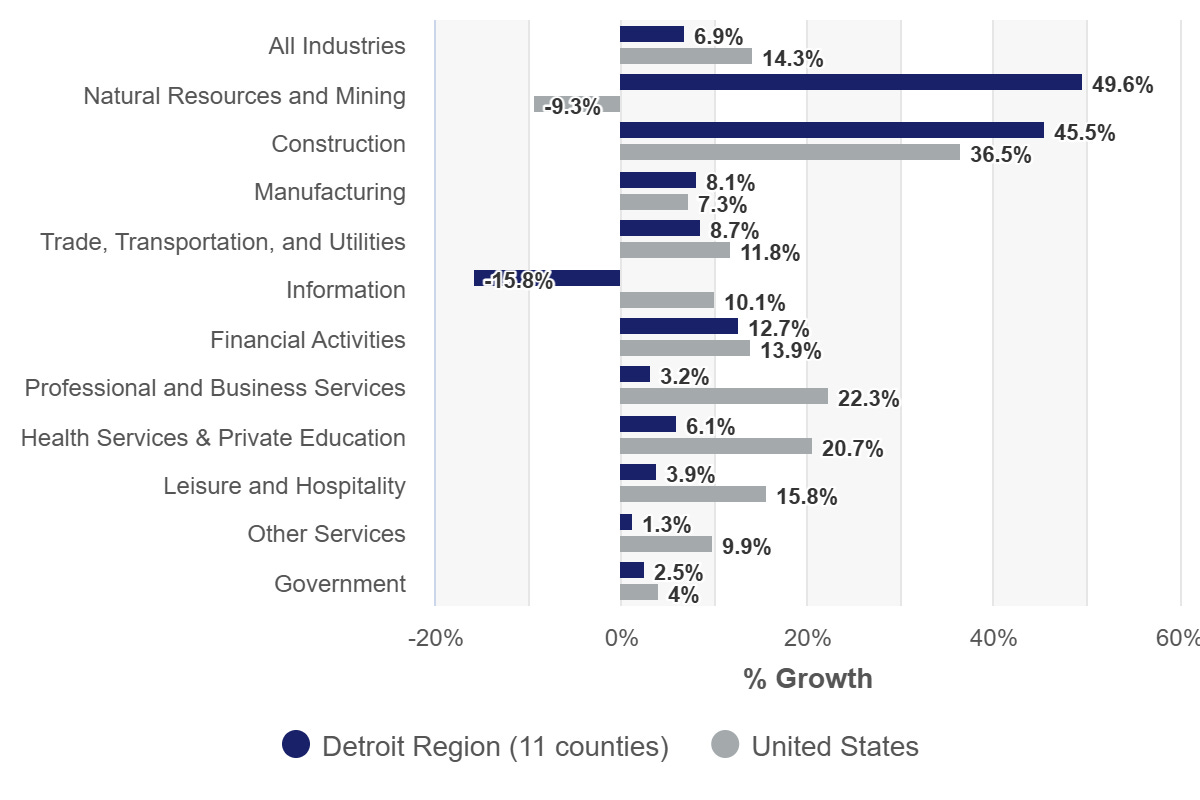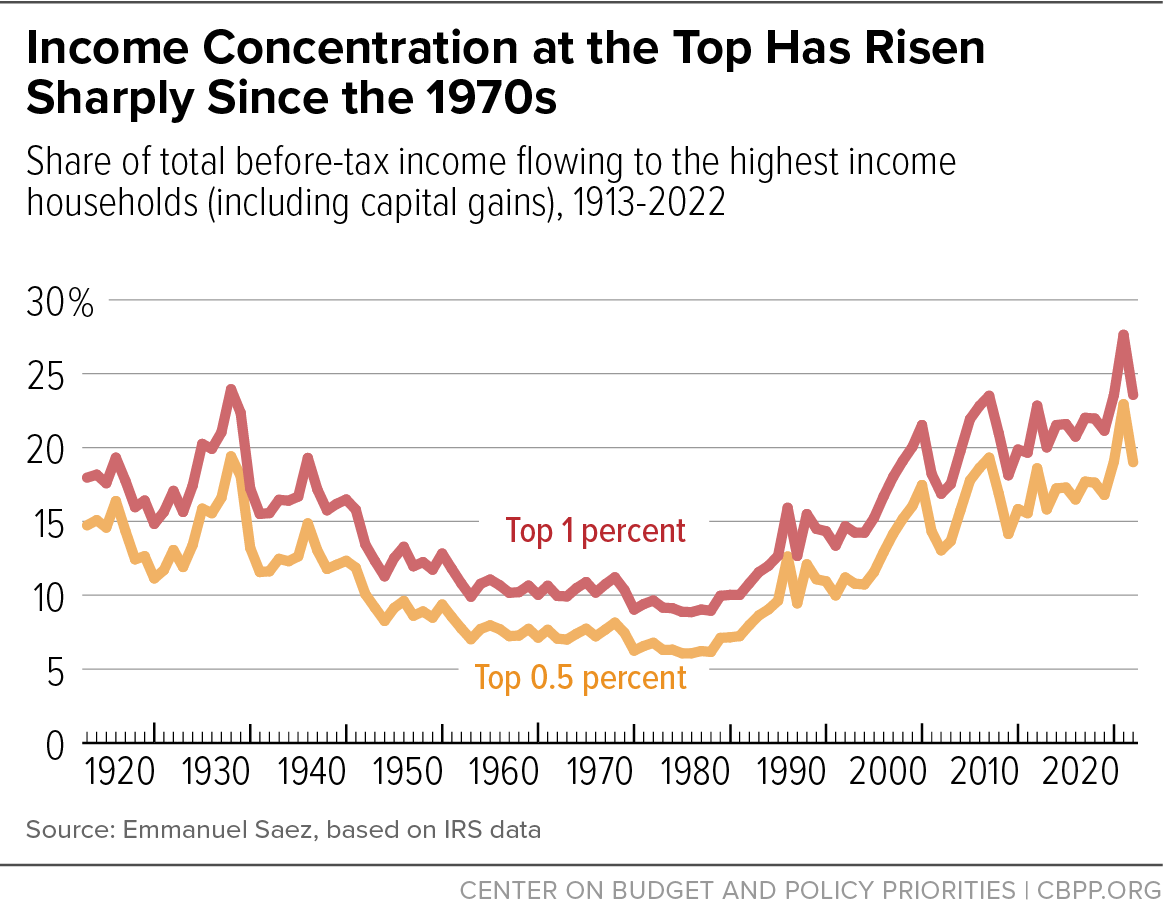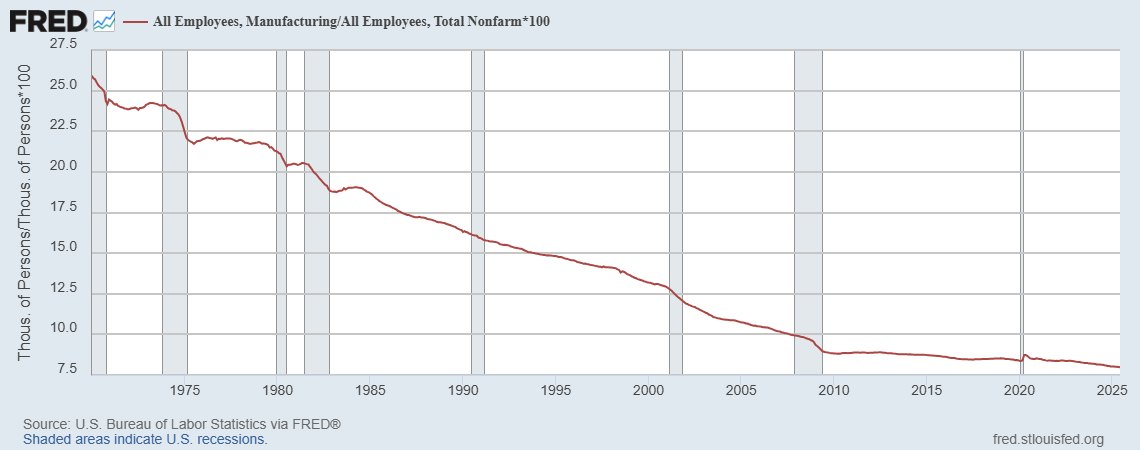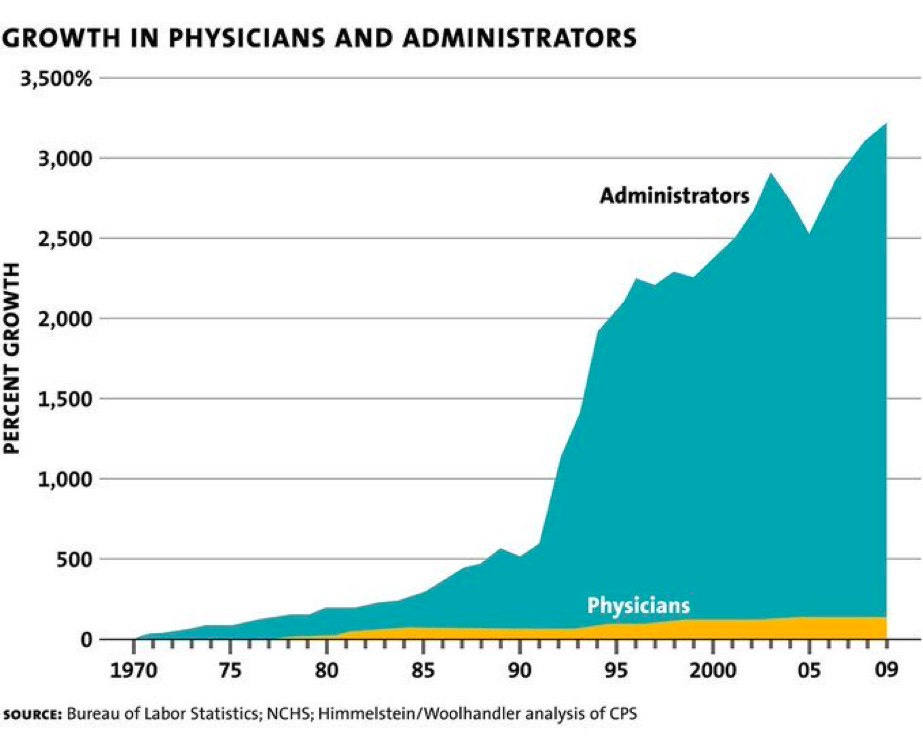Detroit's Second Act
America’s Former Industrial Capital as a Harbinger for Techno-Industrial Progress
Economies across the United States have changed dramatically over the last 35 years.
The business of health has grown be the dominate employer across the U.S. while the business of making things has shuttered.
Detroit as the Rule
Take Detroit. Once the fourth-largest city in the U.S., it served as the industrial backbone of the nation during World War II. Nicknamed “Arsenal of Democracy”, Detroit produced more than 25% of the materials used during the war time efforts. Powered by a booming auto industry, Detroit became a middle-class engine, offering some of the highest wages and homeownership rates in the country. By 1960, it had the highest per capita income of any major American city.
By the 1970’s the music stopped. American workers were rebranded as “cost centers” and offshore factories as “strategic advantages”. The culture, corporate strategy, and policy focus shifted. With a high price of the U.S. dollar and a single minded commitment to low inflation the decline of American manufacturing across the U.S. was accelerated. Detroit was no exception.
In 2013 Detroit filled for the largest municipal bankruptcy in U.S. history. As manufacturing jobs moved oversees, Detroit’s population shrank from 1.8 million in 1950 to less than 700,000 in 2013. It’s dwindling tax base, collapsing housing market paired with decades of poor municipal financial decisions left Detroit with public services collapsing, 70,000+ properties abandoned, pension funds and retiree healthcare benefits up in flames, not to mention a murder rate at a 40-year high.
Detroit as the Early Exception
A year after the 2013 bankruptcy a new mayor took office. In July 2025 he spoke at Reindustrialize about the options he was presented with when considering the future of the motor city post bankruptcy.
”Detroit should be the next biotech hub”
“Detroit should be the next Silicon Valley”
“Detroit should be the next insert xyz hot thing”
Mayor Duggan thought about the various proposals on how to revive, rebrand, and revitalize this great American city and a crazy idea hit him…
What if Detroit did manufacturing again? Like really did manufacturing. What if Detroit became the very thing that made it the powerhouse city throughout the first 70+ years of the 20th century. It’s a simple idea, but one that if taken seriously, had the potential to fundamentally shift the trajectory of the motor city.
Since that time, Detroit has become a top three city in manufacturing employment growth, only behind Dallas–Fort Worth and The Phoenix metro area. Not dissimilar to how AI has revitalized the great city of San Francisco, electric vehicle manufacturing and autonomous vehicle production are in the early days of ushering in a new era of abundance for Detroit. Top auto-manufacturing companies like Ford, General Motors, and Stellantis have all made large investments into the city, focused on advanced manufacturing.
A Decade into The Experiment
Unemployment in Detroit has dropped significantly since 2013, population growth has returned for the first time in over 60 years, median household income is rising, home values have nearly doubled, and public safety has improved, with the lowest homicide rate since 1965.
Much of this progress is driven by a growing manufacturing base. From 2013 to 2023, over 35,000 people joined the manufacturing sector in the Detroit metro area.
Detroit has reclaimed its place as a manufacturing powerhouse, ranking #2in the U.S. for manufacturing talent density, #1 for EV and battery-related investments, #1 for tool and die maker talent density, and the top location for automotive production, producing over 1.7M million vehicles annually. With more than 290,000 advanced manufacturing jobs across 8,000 businesses, Detroit now boasts double the national average of manufacturing talent.
Manufacturing as an Employment Multiplier
Beyond the direct impact of manufacturing job growth in Detroit, there is a significant ripple effect of indirect and induced job creation. For every 100 durable manufacturing jobs added, 744 additional jobs are created in related sectors — one of the highest employment multipliers across any industry.
In Detroit, three industries are outpacing national growth rates: natural resources and mining, construction, and manufacturing. Of these, mining offers perhaps the clearest example of the economic ripple effects of industrial expansion.
Michigan holds a unique strategic advantage: it’s the only state in the U.S. that both produces and processes nickel, a critical material for electric vehicle batteries. As EV production accelerates, this has positioned Detroit as a natural hub. From 2018 to 2023, Michigan attracted over $28 billion in EV and battery-related investments, with the majority flowing directly into the Detroit region. Ford's $3B Plant in Marshall, Our Next Energy’s $1.6B battery manufacturing campus in Van Buren Township, and Stellantis's Sterling Heights Assembly Plant that it is retooling to produce its first battery-electric light-duty pickup truck are all good examples.
Manufacturing as a Key Ingredient to a Strong Middle Class
Historically, manufacturing has been a reliable source of middle-wage jobs that don’t require a college degree. That is even more true today. In Detroit, the average manufacturing worker earns 24% more than the regional average wage; 35% more than workers in health services and private education, 34% more than those in trade, transportation, and utilities, and 20% more than the average government employee.
While rising wealth inequality is a well-known national trend, what’s often forgotten is that it wasn’t always this way. From the post Great Depression era through the 1970s, income inequality in the U.S. steadily declined.
One of my favorite websites is wtfhappenedin1971.com. The short answer? A lot. But one key, and often overlooked, shift was the steady collapse of manufacturing as a share of total U.S. employment. In 1970, manufacturing made up nearly 26% of all nonfarm jobs. By 2000, that number had been cut in half. By 2025, it’s fallen to just 8%.
One of the biggest issues with this decline was the remaining alternatives for those who were in or otherwise would have gone in to manufacturing. The labor reallocation problem.
“The iconic workplace of the mid century was an automobile factory that lifted its workers into the middle class. The microcosm of the modern economy is a hospital staffed by a handful of highly paid physicians and an army of poorly paid support staff”. - Binyamin Applelbaum, The Economists Hour
Today, manufacturing accounts for roughly 12% of Detroit’s workforce, one-third higher than the national average, though still a shadow of its industrial heyday. While the city isn’t yet the “Middle-Class City” it aspires to be, it has made meaningful progress over the last decade.
Detroit’s poverty rate, long among the highest in the nation, fell from 42% in 2012 to 34% in 2022 and neighborhoods with a high concentration of poverty declined by 25%. Home values have grown nearly 100% since 2012 and mortgage lending has surged from just 220 loans in 2012 to 3,211 in 2022. With population decline halted, a balanced budget, and tens of thousands of blighted properties removed, Detroit has turned a corner. The question now is: how does the city grow its middle class?
No panacea exists, but strengthening Detroit’s growing manufacturing base could be the solution the moment demands. On this front, Detroit may be better positioned than any American city to lead. It not only has the potential to be a harbinger for neo-reindustrialization, but also a blueprint for middle-class growth, just as it was a century ago. Onwards.




